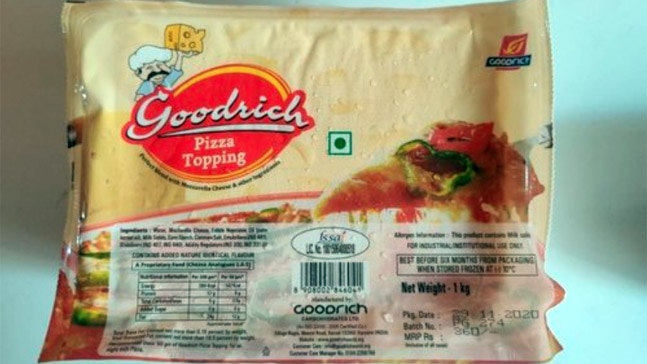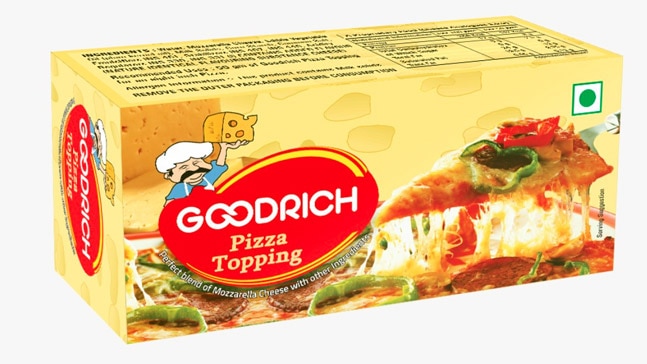Pizza topping is not pizza, so pay more GST. (Don't) Say cheese!

The GST rates for pizza toppings might go up and sadly, our favourite foods are bound to get more expensive.
If you have spent some time understanding GST rates, you might know that GST rates on products depend on the category in which they fall in. The Customs Tariff Act 1975 prescribes the tax rates in a long schedule which is broken into chapters, headings and sub-headings. Rates are allocated to each of these categories and sub-categories, and a product can fall into multiple categories, since overlapping is possible.
This is when things get tricky.
The manufacturers have to decide what category their product falls under and levy tax rates accordingly. But wrong classification could end up being expensive for the companies because levying wrong tax rates and identifying it late could mean heavy taxes and penalties for the companies.
WHAT'S THE MECHANISM
Hence, the government has created a mechanism called Authority for Advance Ruling (AAR), where companies can refer their GST rate queries in advance and can get an advance ruling on the correct tax rates. If companies do not agree to the ruling, they can be further appealed to the higher authority called Appealate Authority for Advance Ruling (AAAR). (It's just like the High Court-Supreme Court hierarchy, where appeals against AAR can be filed to AAAR.)
The authorities can provide a different classification and hence change the tax rates, to the dismay of companies. In these tricky cases, authorities consider the actual end use of the product, key constituents of the product or common parlance, to decide what rates will be levied on products.

WHAT'S THE CASE
Khera Trading Company is a company based out of Haryana that prepares a food item under the brand 'Goodrich' which it calls 'Pizza topping'. Is it pizza topping? Well, the courts don't think so.
The original case was filed in 2017-18 and the first authority in Haryana (AAR) had ruled that the pizza topping would be classified as 'Other items' and not cheese. The company appealed to the next authority and on March 10, the second authority (AAAR) confirmed the ruling in a 23-page verdict.

THE COMPANY'S POV
As per the company's point of view, since this food item that they call pizza topping is made of 15% mozzarella cheese, 15% milk solids and skimmed milk powder, 22% of edible oil and small quantities of other ingredients. Since almost 30% [14.5% (mozzarella cheese) + 15% (milk solids and skimmed milk powder)] of product is comprised of cheese and other milk derivates, and it still maintains a cheesy texture (after the entire cooking process), it should be classified under the Chapter heading 0406 where it can be taxed as 'Cheese'.
THE AUTHORITIES' POV
The authorities mentioned a number of international references, looked up the definition of cheese, and argued that since the preparation of cheese is different from the preparation of the pizza toppings, the pizza topping should be classified as 'Miscellaneous Edible Products'. The authorities also considered the other ingredients used in the pizza topping and since this one contained about 22% of edible oil, it concluded that while a pizza topping is sold as a 'cheese topping', it is not 'cheese'.
The AAAR ruled on March 10 that pizza topping should be levied with 18% GST and will be classified under the Chapter heading 2106 as 'Miscellaneous Edible Products', which form part of 'Food preparations not elsewhere specified or included'.
Hence, it will be accompanied with other products like protein concentrates, pan masala, sherbats, supari, custard powder.

SO, WHAT IS THE CHANGE?
This changes the tax rates on this so-called pizza topping from 12% to 18%, thus raising the base cost of a basic pizza.
This change in rate on pizza toppings is expected to send costing for pizza companies for a toss since pizza companies can only charge 5% from customers while paying 18% on input materials.
HAS THIS HAPPENED EARLIER?
In 2020, the Karnataka AAR had levied a 18% GST on frozen, ready to cook parathas, while ready to eat rotis were charged with 5% GST. This had caused a huge debate.
In 2021, a similar debate began after the Gujarat AAR also levied 18% GST on ready to cook parathas.
The appealants requested that since there was a lot of similarity between chapati, roti, khakhras and parathas, and since the process of making them and using them is exactly the same, frozen parathas should be levied with 5% tax.
But the AAR mentioned that a khakhra and a plain roti would have been cooked before and was ready to eat. Since it did not need to be cooked again to be eaten, it was charged at 5%.
On the other hand, the 'paratha' was not only different from all the above, but also required further processing to make it edible. This meant that paratha is ready to cook unlike roti, which is ready to eat.
Also there are differences in the usage instructions written on the cover packets. Rotis are to be heated on a medium flame for 3 to 4 minutes while the paratha needs to be heated using oil or butter to make it more tasty and crisp.

